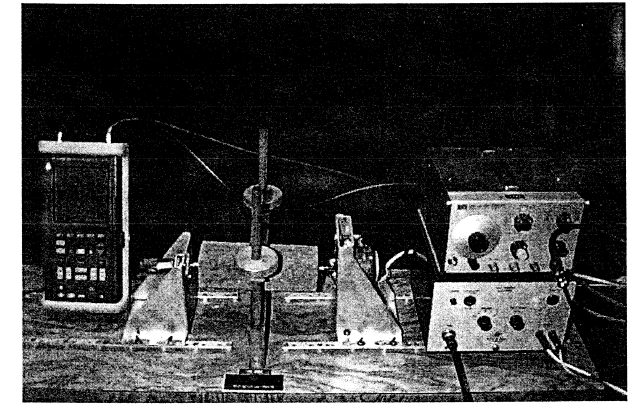Department of Civil, Surveying, and Environmental Engineering
The University of Newcastle, Callaghan, NSW 2308, Australia
ABSTRACT
Two dynamic test methods, which had been originally developed for measuring mechanical properties of concrete, have been adopted for masonry testing.
The Longitudinal Vibration Test Method (L VTM) uses a modified version of the Electro-Dynamic Materials Tester Emefco SCT/5. the original instrument complies with BS 1881 :52 (longitudinal vibrations). This test is based on measuring the fundamental natural frequency of a regularly shaped brick or masonry specimen. An accurate oscillator operates a vibrator, which in tum excites the specimen clamped in the centre of its length. The oscillations are picked up by a piezo-electric crystal pick-up passed through an amplifier and the signal is displayed on an oscilloscope ..
The Ultrasonic Pulse Velocity Method (UPVM) uses a standard measurement unit the CNS Portable Ultrasonic Non-destructive Digital Indicating Tester (PUNDIT). This test is based on measuring the velocity of ultrasonic pulses travelling in a solid material. PUNDIT generates ultrasonic pulses and indicates the time taken for the earliest part of the pulse to reach the receiving transducer accurately measured from the time it leaves the transmitting transducer when these transducers are placed at suitable points on the surface of the material. The distance, which the pulses travel in the material, is also measured and the velocity is determined from the ratio of the path length to the transit time.
Results of both these tests are compared to the results of the conventional uniaxial static test for several types of masonry. The ability of these tests to reflect such phenomenon as influence of the load frequency on the modulus of elasticity of masonry is discussed.
0448.pdf



